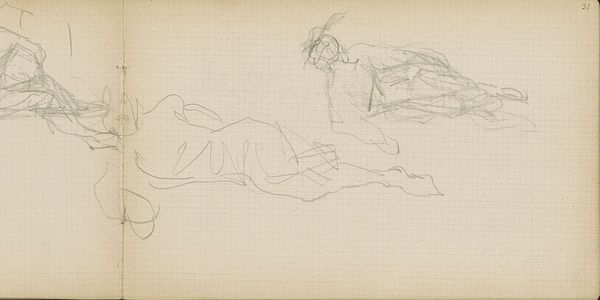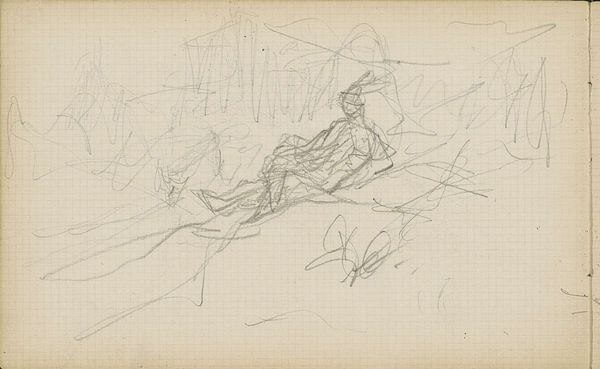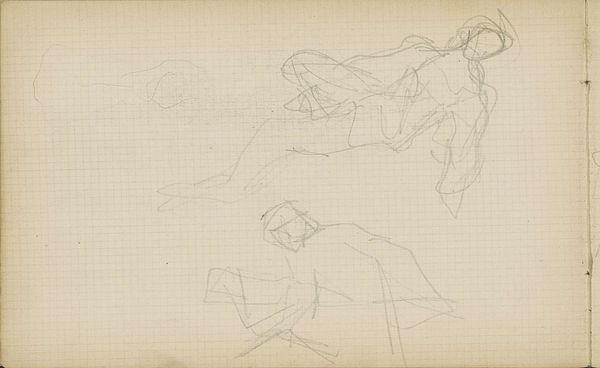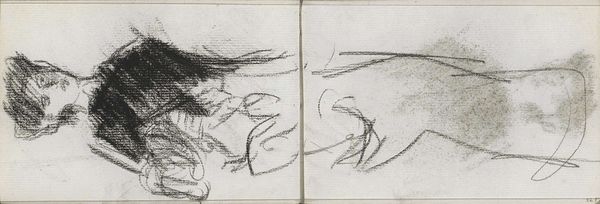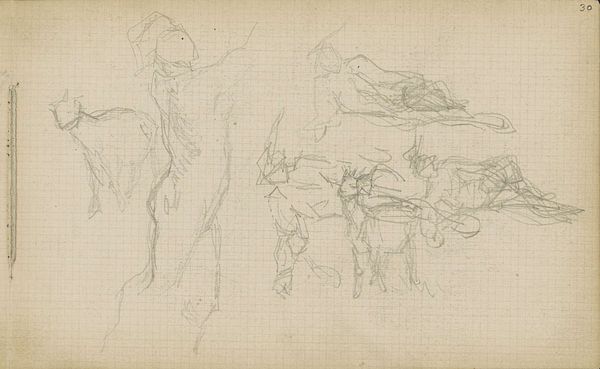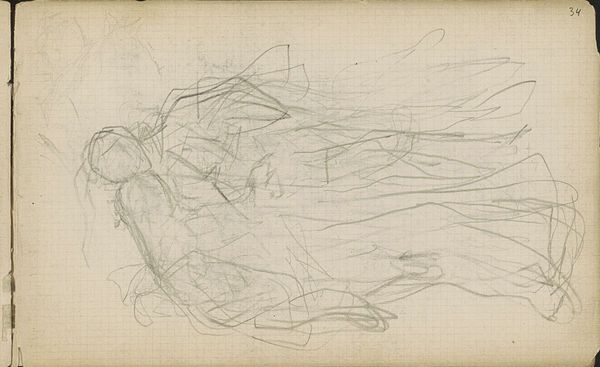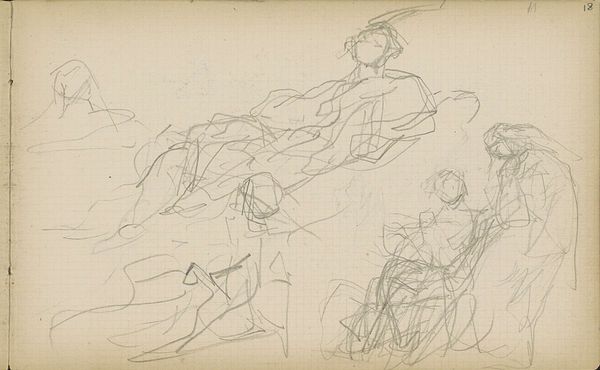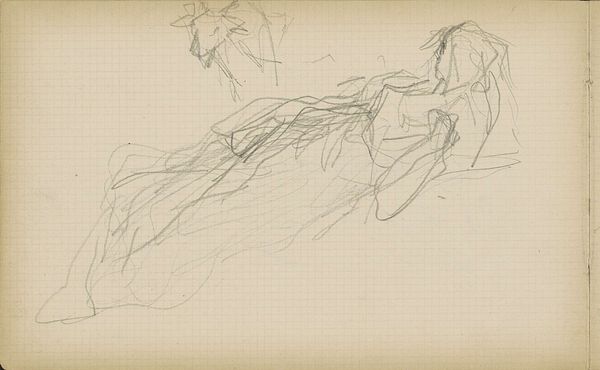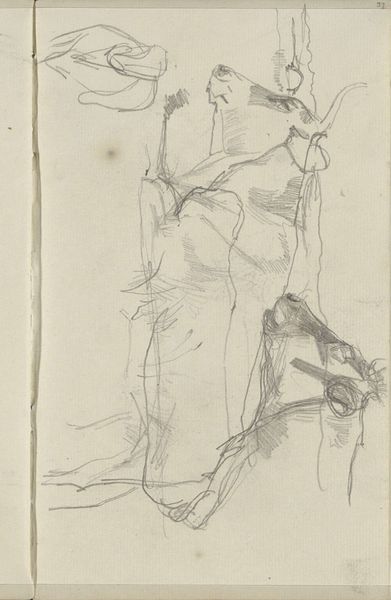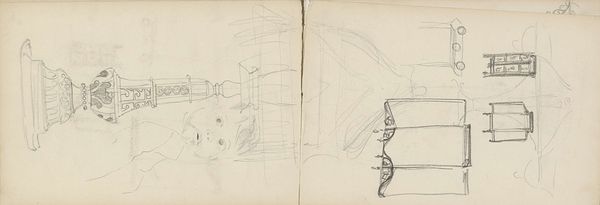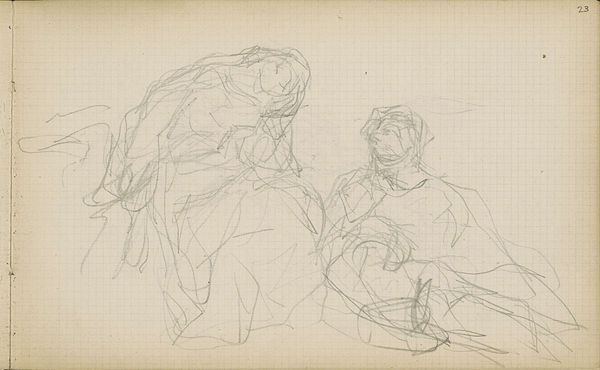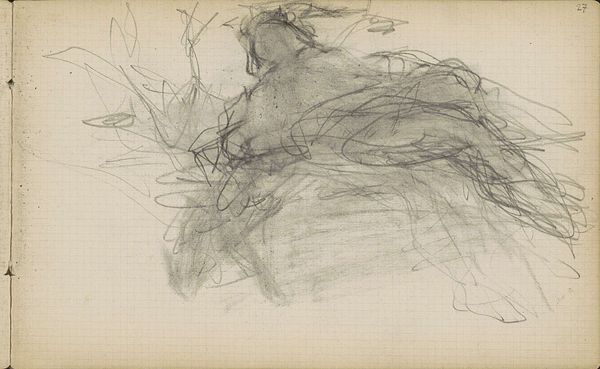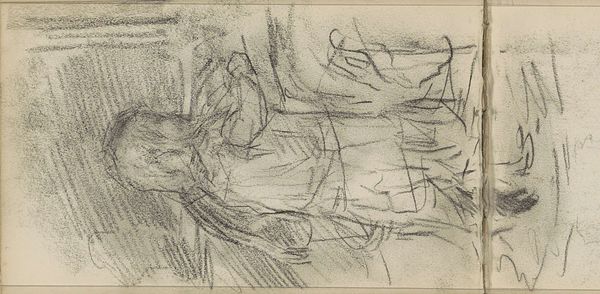
drawing, pencil, graphite
#
drawing
#
landscape
#
figuration
#
pencil
#
graphite
Copyright: Rijks Museum: Open Domain
Editor: Here we have Matthijs Maris’s "Liggende figuren," a drawing with pencil and graphite from between 1849 and 1917, housed at the Rijksmuseum. The figures are loose, almost ethereal. What do you see in this work, especially considering the artistic process? Curator: I see an immediate connection to the labor inherent in the act of drawing. Consider Maris's deliberate use of pencil and graphite; inexpensive, readily available materials that democratize art making. How does this choice, to use such accessible means, challenge the notion of high art requiring precious materials? Editor: That’s interesting. It feels very raw because of the sketch-like quality of the lines and figures; as if quickly made on-site to document figures in the landscape or studio. Curator: Exactly. These rapid sketches aren’t just about recording appearances; they speak to the broader societal context in which art is produced. What roles do sketches like this, perhaps for later studio works, serve in the artist's process versus the expectations of the consumer of the 'finished' artwork? Do these quick sketches diminish or enhance the importance of his artistic practice? Editor: I see what you mean! Maris almost gives us a glimpse into the artistic production as a work in itself. By foregrounding process he removes art from any rarefied atmosphere. Curator: Precisely. He's offering access to the mechanics, even the grit, of art-making. Consider the implications of deconstructing the artistic aura—what does it mean for our understanding of artistic skill and the market value of art objects? Editor: That opens up so much to think about regarding labor and what is often unseen, thank you! Curator: My pleasure. Considering materials helps reveal those complex layers, even within a seemingly simple drawing.
Comments
No comments
Be the first to comment and join the conversation on the ultimate creative platform.

